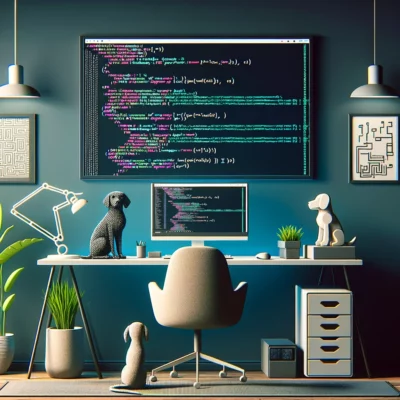Introduction to Text-to-Image Modeling in the Digital Age
In the digital world today, the blend of text and images is becoming more distinct, driven by advancements in artificial intelligence. This technology, called text-to-image modeling, is transforming how we approach creativity and communication.
The Mechanics of Text-to-Image AI and Its Training Process
Text-to-image modeling harnesses AI’s capacity to interpret both written words and visual content. Trained on extensive datasets comprising countless image-text pairs, these models grasp the nuanced relationships between descriptions and their corresponding visuals. Through this training, AI systems develop a profound comprehension of how specific terms align with visual characteristics.
Understanding Embeddings: The Core of Text-to-Image Technology
A pivotal element of this technology is the concept of embeddings—numerical representations of text and images within a mutual, multi-dimensional space. This allows AI to juxtapose and align text with images effectively. A notable technique in this field is CLIP (Contrastive Language-Image Pre-training), which equips the AI to navigate the “language” of images related to text descriptions.
Measuring Congruence in AI with Cosine Similarity
The AI evaluates the congruence between text and images using cosine similarity. This metric, measuring the cosine of the angle between text and image embeddings, identifies their similarity, with values nearing 1 indicating a close match. This capability enables the AI to produce images that are true to the provided text descriptions.
Expanding Horizons: Applications of Text-to-Image Technology in Creative and Marketing Industries
Text-to-image technology’s potential extends across various sectors. In creative fields, artists and designers collaborate with AI to create innovative visuals that challenge conventional boundaries. Marketing professionals utilize these models to craft tailored visual content that resonates with specific audiences and enhances campaign effectiveness.
Educational and Communicative Benefits of Text-to-Image Modeling
Moreover, educational and communicative applications are profound. Educators incorporate this technology to devise illustrative aids that simplify complex subjects, while content creators generate impactful visuals that bolster their narratives.
The Future of Visual Representation: Advancements and Potential of AI Models
As these models advance, their applications expand, promising even more sophisticated and nuanced visual representations. This evolution marks a significant shift towards a more visually-oriented and AI-integrated future in communication and creative expression.
# This is a highly simplified example and does not reflect the actual complexity
# and data requirements of training models like CLIP, nor does it accurately simulate
# the embedding process, which in real applications involves deep learning techniques
# and a vast amount of training data.
import numpy as np
# Predefined embeddings for a small set of categories
category_embeddings = {
"cat": np.array([1, 0, 0], dtype=np.float64),
"dog": np.array([0, 1, 0], dtype=np.float64),
"pet": np.array([0.5, 0.5, 0], dtype=np.float64),
"rug": np.array([0, 0, 1], dtype=np.float64),
"mat": np.array([0, 0, 0.5], dtype=np.float64)
}
def generate_embedding(description):
"""
Generate a normalized embedding vector for a given description.
Args:
description (str): A textual description containing one or more keywords that map to predefined embeddings.
Returns:
numpy.ndarray: A normalized vector representing the aggregate embedding of the input description.
"""
words = description.split()
embedding = np.zeros_like(next(iter(category_embeddings.values())), dtype=np.float64)
for word in words:
if word in category_embeddings:
embedding += category_embeddings[word]
if np.linalg.norm(embedding) > 0:
embedding /= np.linalg.norm(embedding)
return embedding
class MockCLIPModel:
"""
A mock model simulating the functionality of the CLIP model which maps images and text to a shared embedding space.
"""
def __init__(self):
"""
Initializes the MockCLIPModel with empty dictionaries to store text and image embeddings.
"""
self.text_to_embedding = {}
self.image_to_embedding = {}
def embed_text(self, text):
"""
Retrieve or create a normalized embedding for a given text.
Args:
text (str): The text to embed.
Returns:
numpy.ndarray: The embedding vector for the given text.
"""
if text not in self.text_to_embedding:
self.text_to_embedding[text] = generate_embedding(text)
return self.text_to_embedding[text]
def embed_image(self, image_description):
"""
Retrieve or create a normalized embedding for a given image description.
Args:
image_description (str): The description of the image.
Returns:
numpy.ndarray: The embedding vector for the given image description.
"""
if image_description not in self.image_to_embedding:
self.image_to_embedding[image_description] = generate_embedding(image_description)
return self.image_to_embedding[image_description]
def find_similarities(self, text, image_description):
"""
Calculate the cosine similarity between embeddings of text and image description.
Args:
text (str): The text to compare.
image_description (str): The image description to compare.
Returns:
float: The cosine similarity score between the text and image description embeddings.
"""
text_embedding = self.embed_text(text)
image_embedding = self.embed_image(image_description)
if np.linalg.norm(text_embedding) == 0 or np.linalg.norm(image_embedding) == 0:
return 0 # Return 0 similarity if either embedding is a zero vector
similarity = np.dot(text_embedding, image_embedding) / (
np.linalg.norm(text_embedding) * np.linalg.norm(image_embedding)
)
return similarity
# Example usage
clip_model = MockCLIPModel()
# Embedding text and an image descriptions
text = "A cat sitting on a mat"
an_image_of_a_pet_on_a_rug = "A pet on a rug"
an_image_of_a_person_driving_a_car = "A person driving a car"
# Finding similarity between the text and the image descriptions
similarity_for_pet_on_rug = clip_model.find_similarities(
text, an_image_of_a_pet_on_a_rug
)
similarity_for_person_driving_car = clip_model.find_similarities(
text, an_image_of_a_person_driving_a_car
)
print(
f"Similarity for pet on rug: {similarity_for_pet_on_rug:.2f} and for person driving car: {similarity_for_person_driving_car:.2f}"
)
# Output:
# Similarity for pet on rug: 0.73 and for person driving car: 0.00